Growing Hydrangeas? These Are the 5 Main Types, and How They Differ
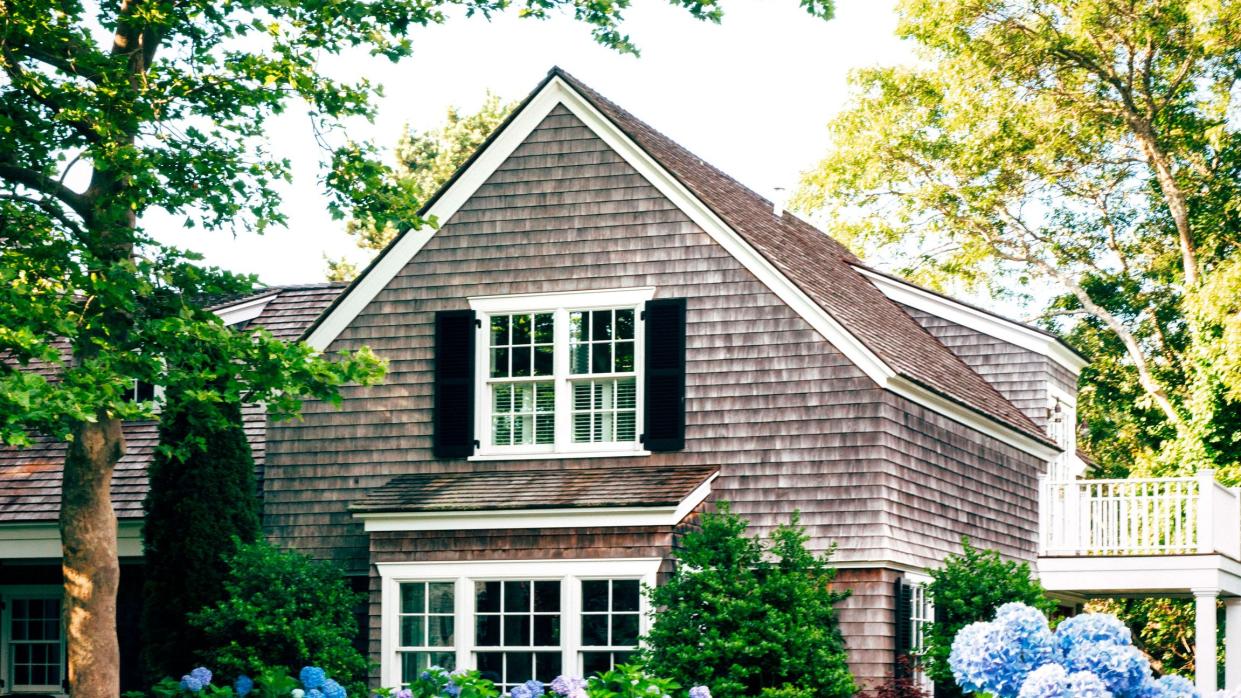
[table-of-contents] stripped
Ah, summer! It’s the season for reading a book in a hammock while sipping homemade lemonade and admiring the "it" flower of summertime: the hydrangea!
This garden favorite doesn't just come in a one-size-fits-all variety, however. There are actually 5 main types of hydrangea in North America. From the most popular big leaf to the tree-like panicles there is a hydrangea option to fit any garden space.
Hydrangeas pair well with ferns, azaleas, and hostas and when planted all together will almost guarantee a pretty yard.
Here are some facts about the five types including a few varieties of each type that we love!
Hydrangea Basic Info
Common Name: Hydrangea
Botanical Name: Hydrangea spp.
Plant Family: Hydrangeaceae
Type of Plant: Shrub, tree, or vine
Native Origin: Asia and the Americas
Sun Exposure: Full sun to part sun, depending on variety and location
Preferred Soil Type/PH range: Depends on variety and bloom color preference
Mature Size: 1 to 5 feet for dwarf varieties. Up to 80 feet for vine varieties
Flower color: Pink, purple, blue, white, green, and variegated
Toxic to pet: Yes, if ingested
Hardiness Zones: 3 to 9
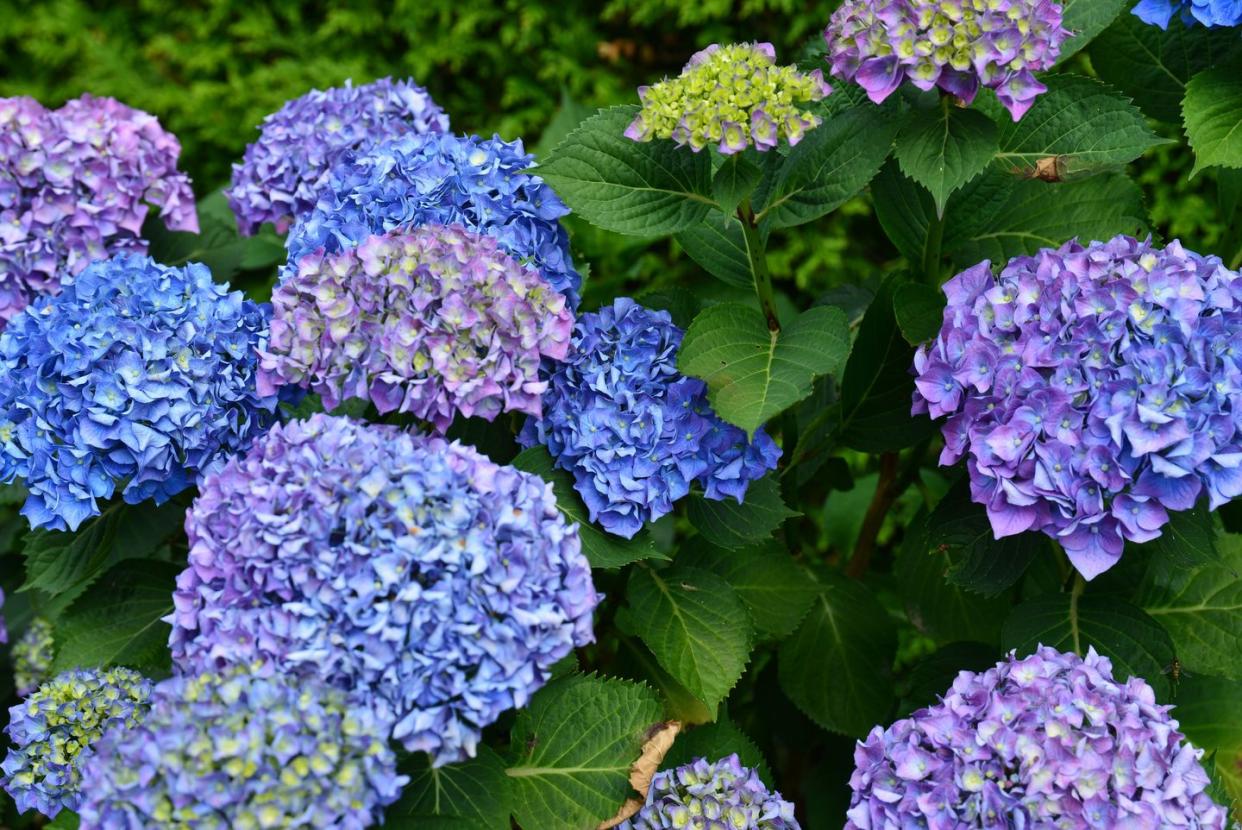
Big Leaf Hydrangea (Hydrangea macrophylla)
Also called French or Florist hydrangea, this is the most common type of hydrangea. Big leafs are hearty from zones 5 to 9, but need to be protected from extreme winter temperatures. (Find your hardiness zone here.)
They like moist soil that drains well, want plenty of room to spread, and enjoy morning sun with afternoon shade. Most varieties bloom on old wood, so prune just after the flowers have faded.
The flower buds of these varieties are sensitive to cold and while the plant may grow and leaf-out you may get few or no summer blooms when the winters are extreme. The bloom color is affected by the soil pH: acidic soil produces blue and purple blooms, while alkaline soil begets pink blooms.
Within this category there are three types.
Mopheads – These have big puffy blooms that are often blue, pink or purple. The leaves are thick, shiny, and heart-shaped. Mopheads need a lot of water before they are established, but their water needs reduce as the plant matures.
Lacecap - Similar to mopheads but the blooms are made up of a center of short flowers, surrounded by a ring of showier flowers. Growing needs are the same as Mopheads. Lacecaps can tolerate severe pruning (up to 1/3 of each stem), if you want to control the size of the plant.
Mountain - This is the least common type of mophead and is native to Japan and Korea. They have the smallest flowers of the three big leaf types. Mountain hydrangea are tolerant of temperature fluctuations because their blooms stay dormant longer than lacecaps or mopheads, meaning they won't start to bud during a warm spell and then get killed of when the temperatures turn cold again.
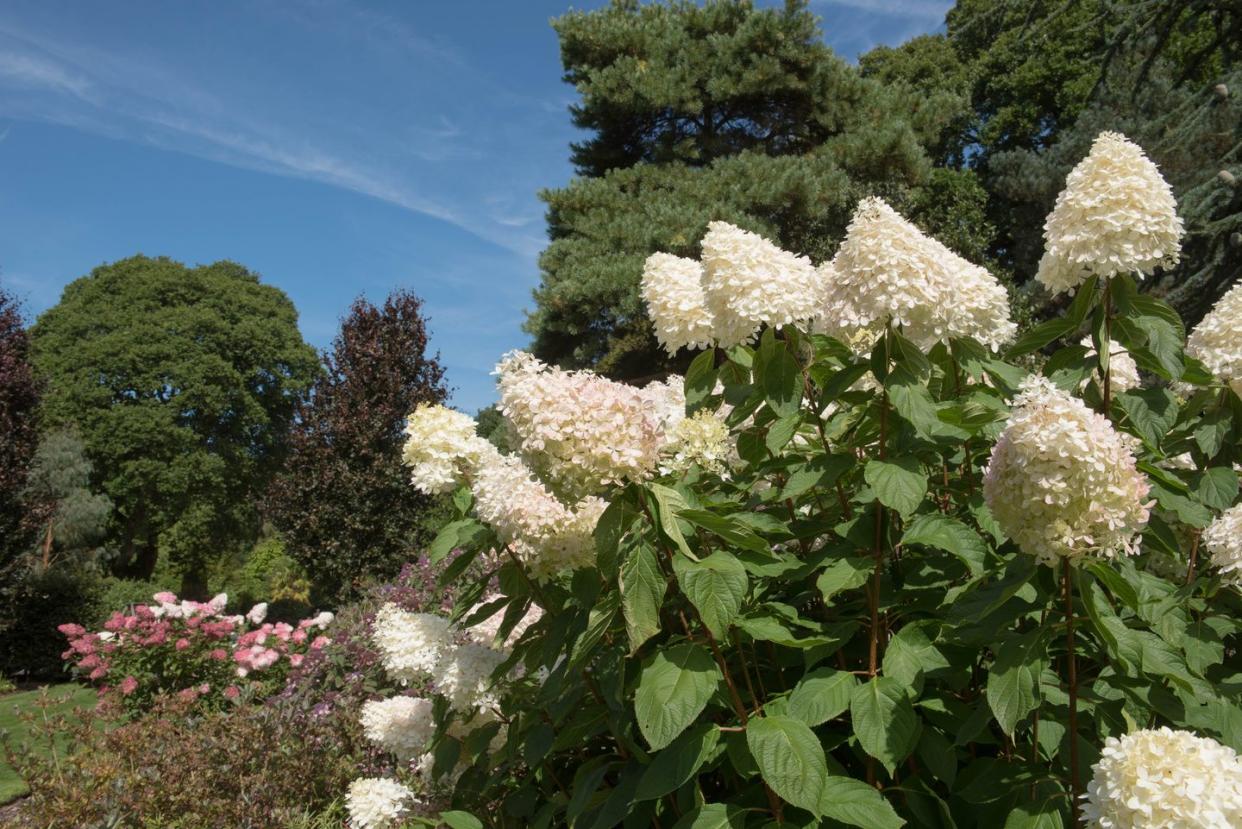
Panicle Hydrangea (Hydrangea paniculata)
This hydrangea is super easy to grow! It has large, cone-shaped blooms that are usually white but may turn to shades of pink depending on the variety. These are also the only hydrangea variety that can form a tree rather than just a bush shape.
The leaves a smaller than mopheads and more elongated. Grow panicile in full sun in zones 3 to 6 and part shade in zones 7 to 9. (Find your hardiness zone here.) They can handle difficult soil conditions, such as clay, as long as it drains well. Some varieties can grow up to 8 feet tall but dwarf versions are typically under 5 feet. Panicles bloom on new wood so prune in the fall or early spring.
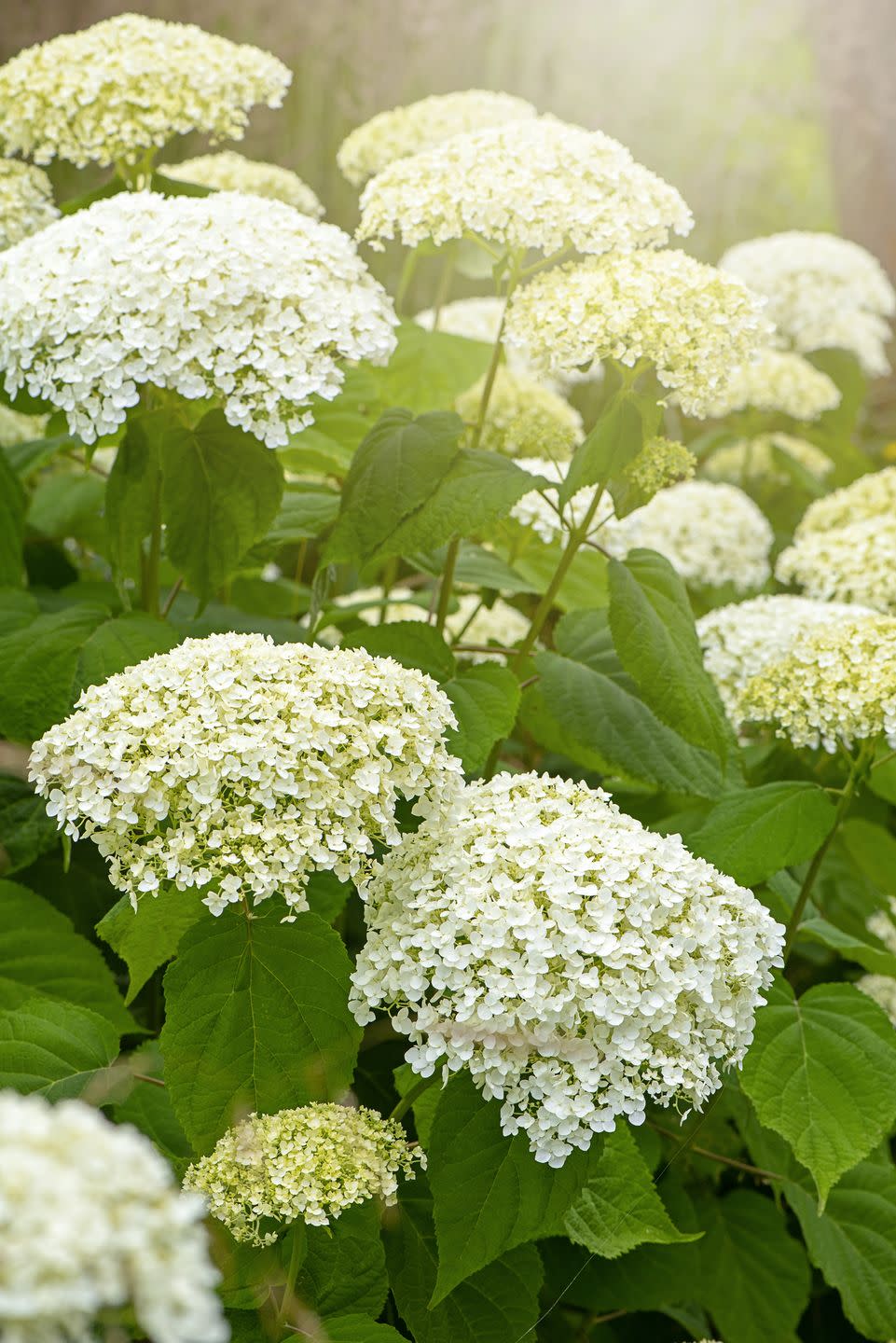
Smooth Hydrangeas (Hydrangea arborescens)
Also called wild or Annabelle hydrangea, this variety is native to the Southeastern part of the United States. The leaves are typically heart-shaped and thin.
The size of mature plants can vary greatly by variety, from just around 1 foot in height to over 8 feet tall. They need at least 4 hours of sun per day with afternoon shade in hotter climates. Blooms appear on new wood so prune in the fall or early spring. And like Panicile, smooth hydrangeas can handle difficult soil conditions, such as clay, as long as it drains well.
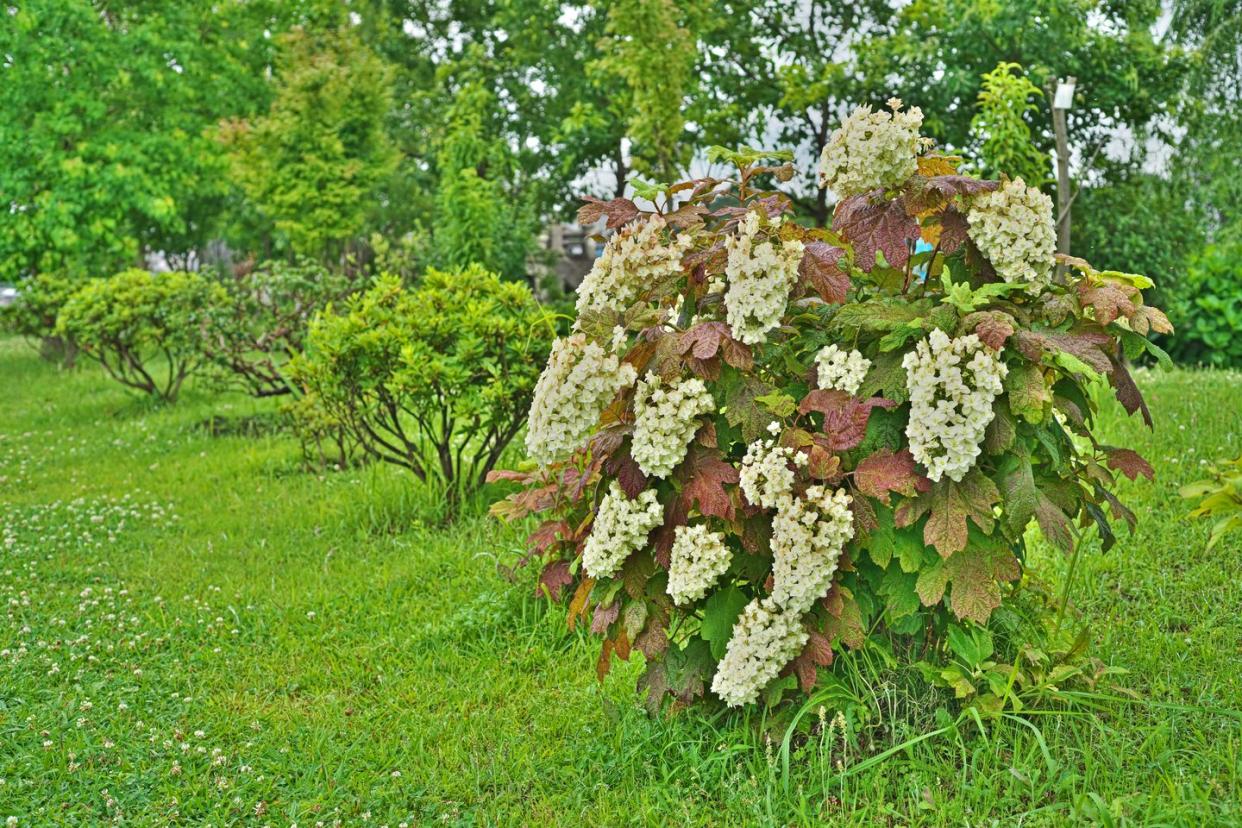
Oakleaf Hydrangea (Hydrangea quercifolia)
The oakleaf hydrangea have to much to offer: big oak-shaped leaves, large conical-shaped blooms, peeling bark, and dramatic fall foliage that turns orange to burgundy.
They are native to North America. Oak leaves grow well in both shade and part-sun environments, but those grown in shade won't have as many blooms or the same showy fall color.
You can grow oakleaf in zones 5 to 9 but for maximum blooms, this type like regions with hot, sunny summers. (Find your hardiness zone here.)
Grow them in moist, well-drained soil. (Established plants can handle some drought.) Oakleafs bloom on old wood so avoid pruning if possible, but if necessary do so just after they flower.
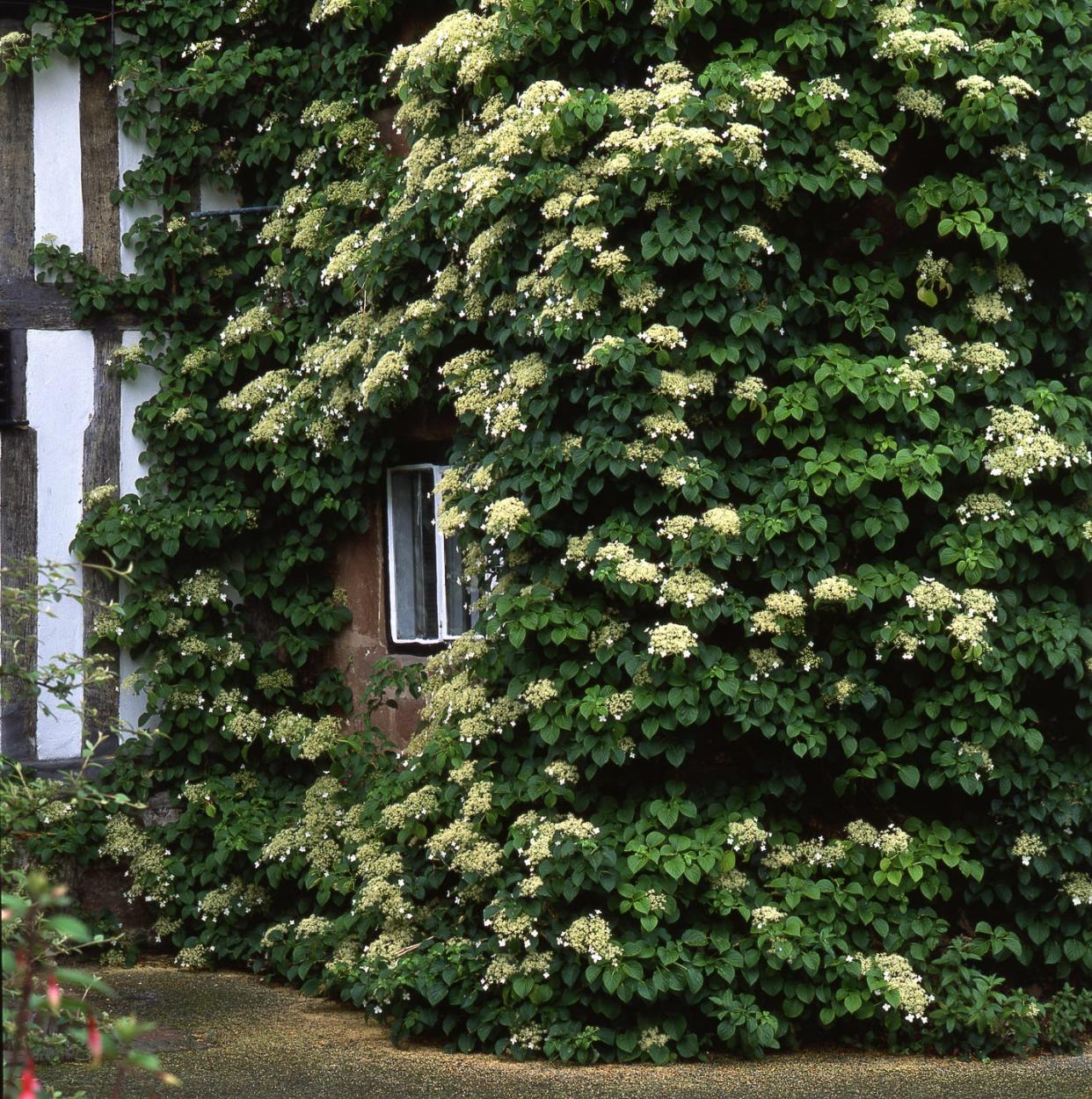
Climbing Hydrangea (Hydrangea petiolaris)
Native to Asia, climbing hydrangeas grow as a woody vine as opposed to a shrub. You will see them growing up trees, along fences, and over pergolas.
The vines prefer to grow in part-shade environments (between 4 to 6 hours of sun per day), with nice filtered light. Most have large, fragrant flowers and do best in zones 4 to 8. (Find your hardiness zone here.) While they are slow-growing, over time they can reach up to 80 feet long.
During the first couple of growing seasons you will have to help a new plant cling to its growing support with garden twine or ties. After that, new growth will produce rootlets that will help anchor the plant to the support. Climbing hydrangea need very little pruning and, because they bloom on old wood, you should prune them selectively and only when necesssary.
20 Drought-Resistant Plants for Dry Climates
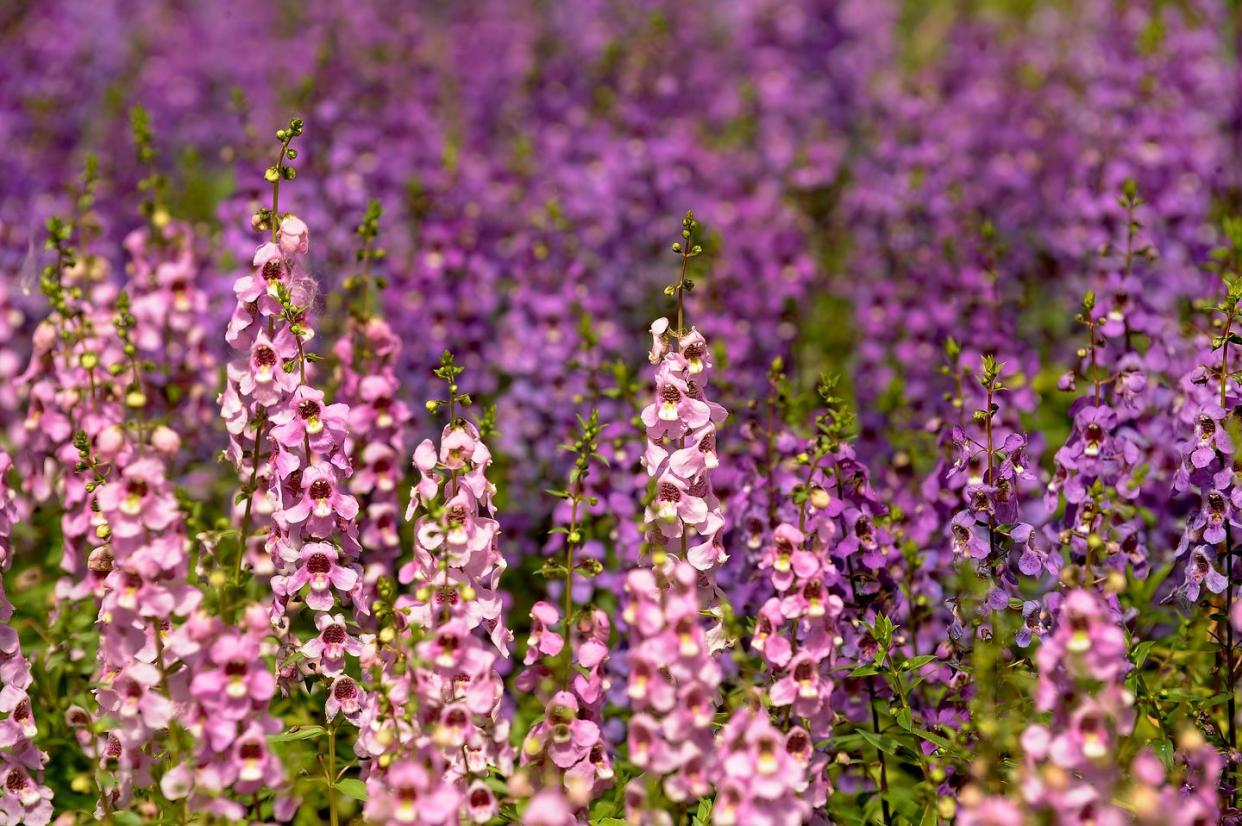
25 Evergreen Shrubs That Add Year-Round Beauty
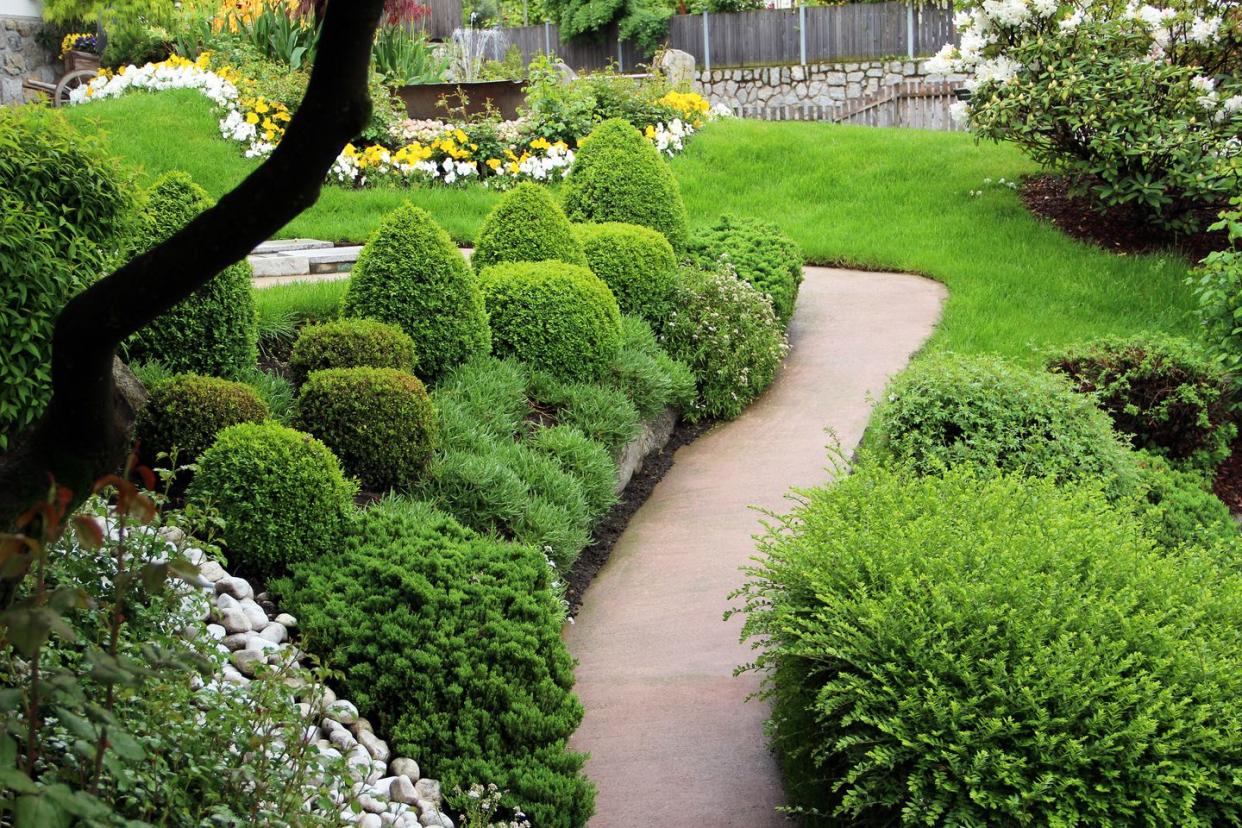
24 Best Low-Maintenance Flowers and Plants for the Lazy Gardener
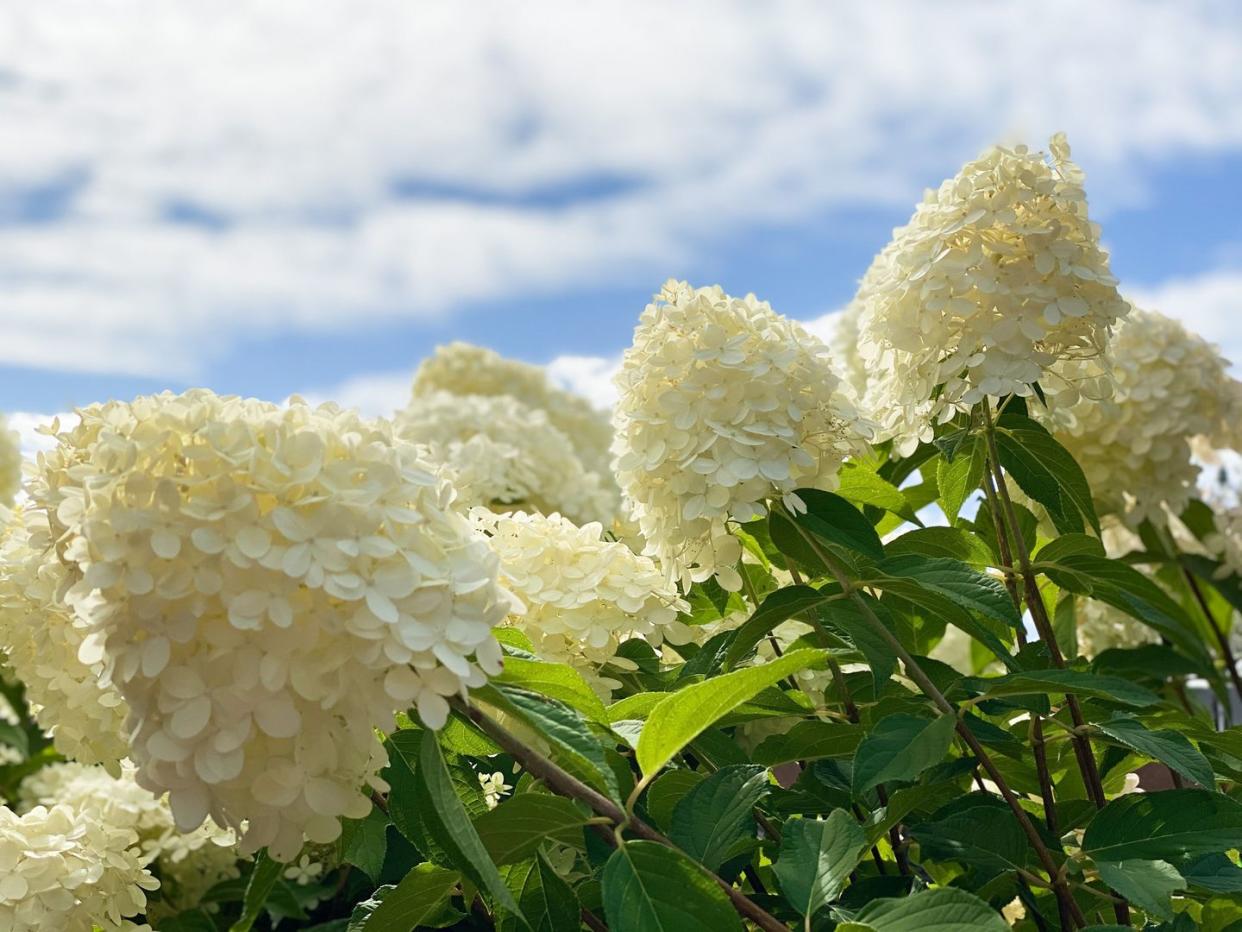
15 Best Plants That Grow on Slopes
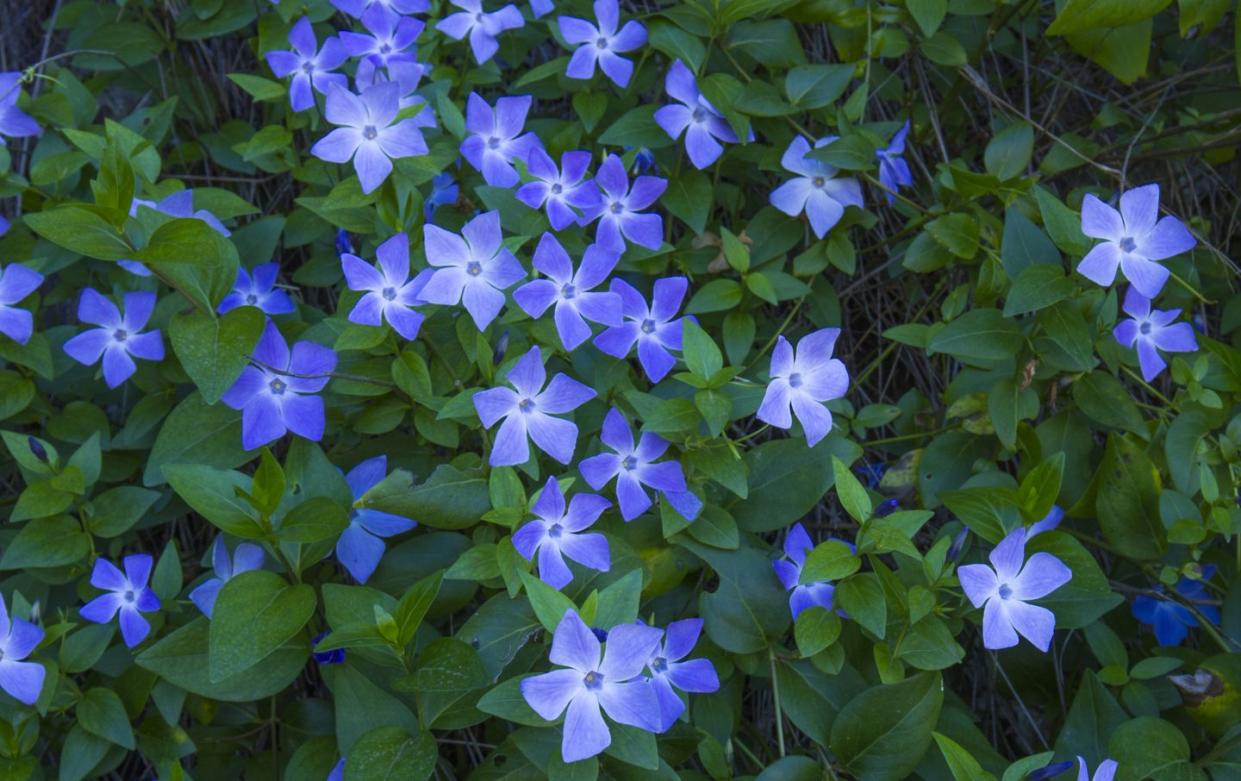
You Might Also Like
